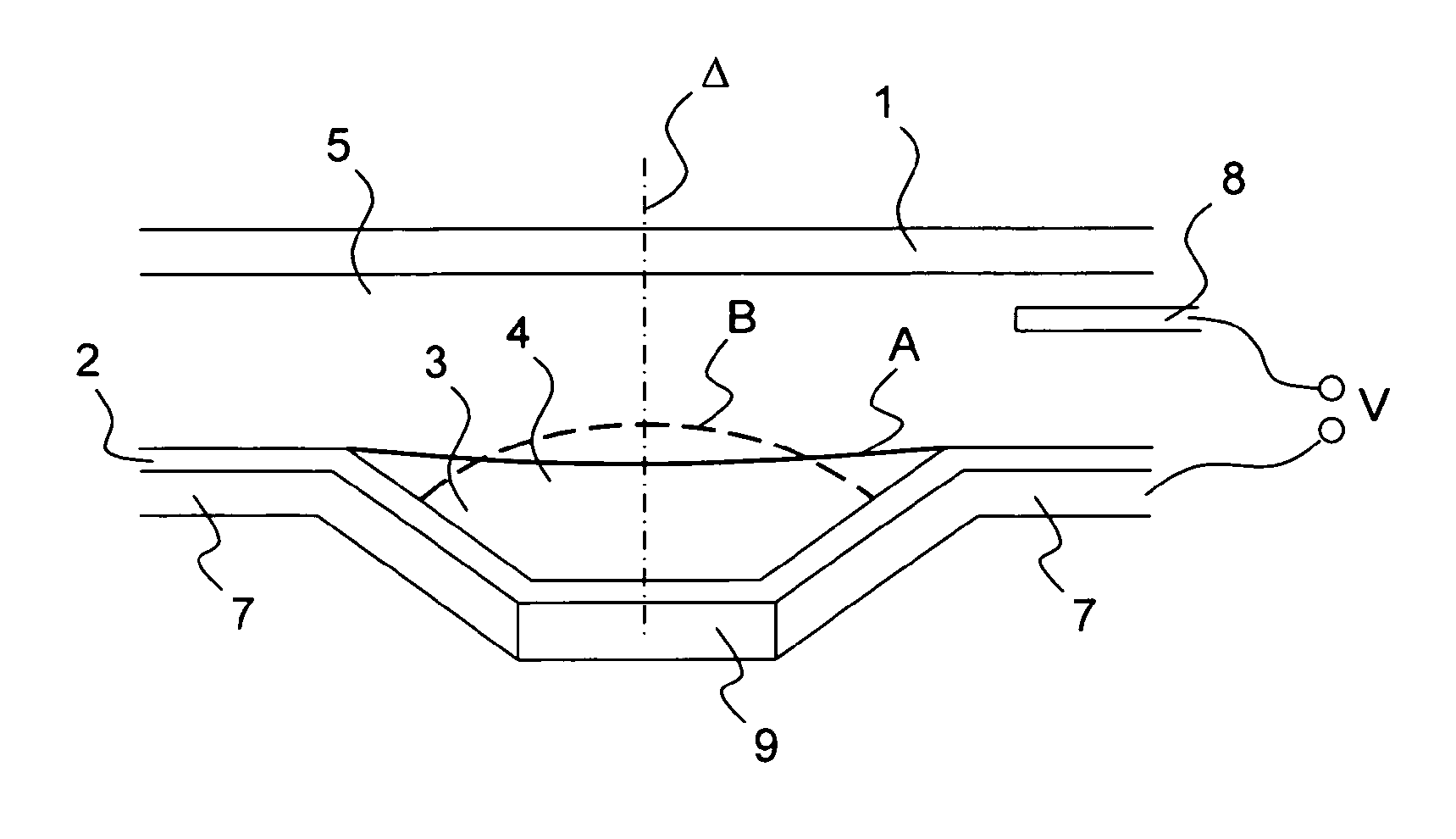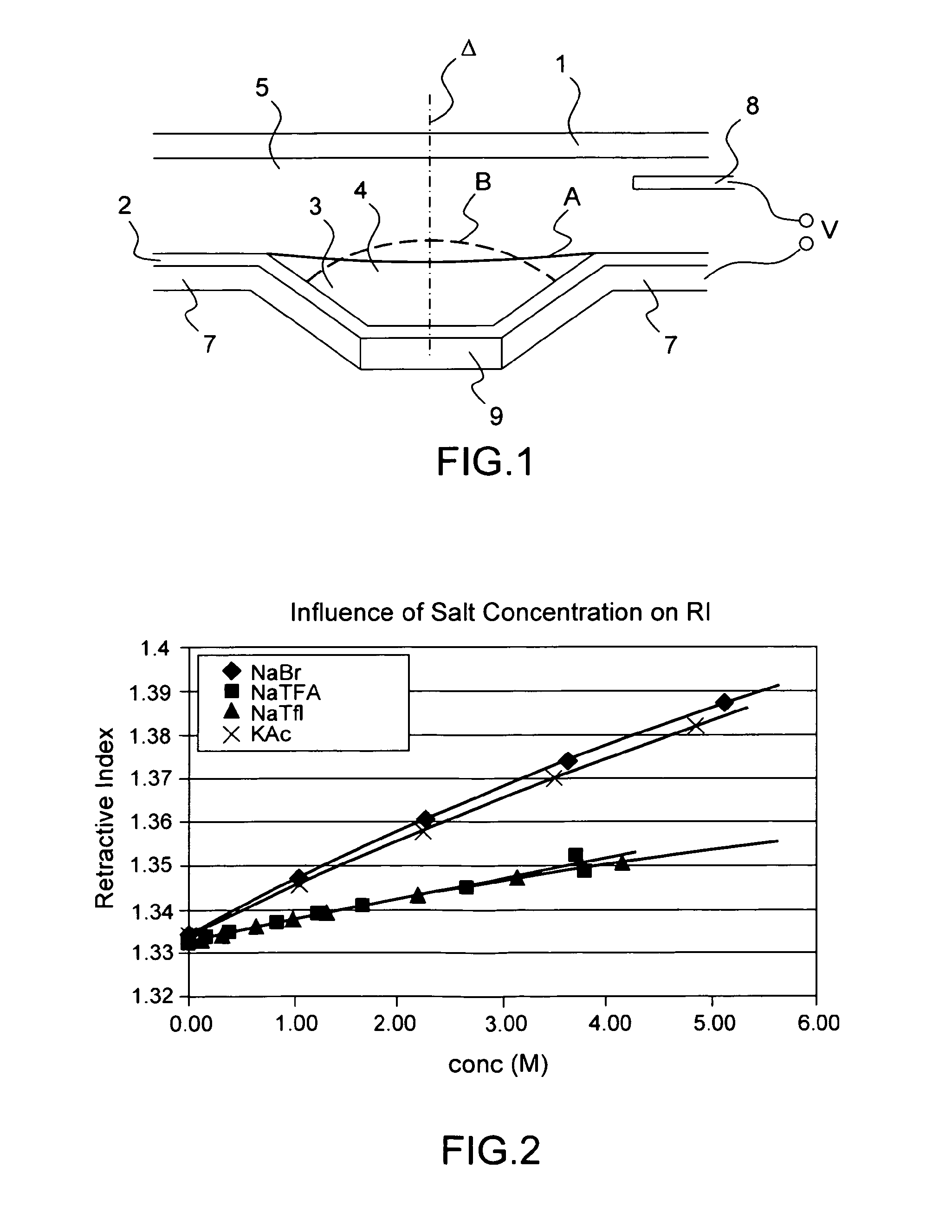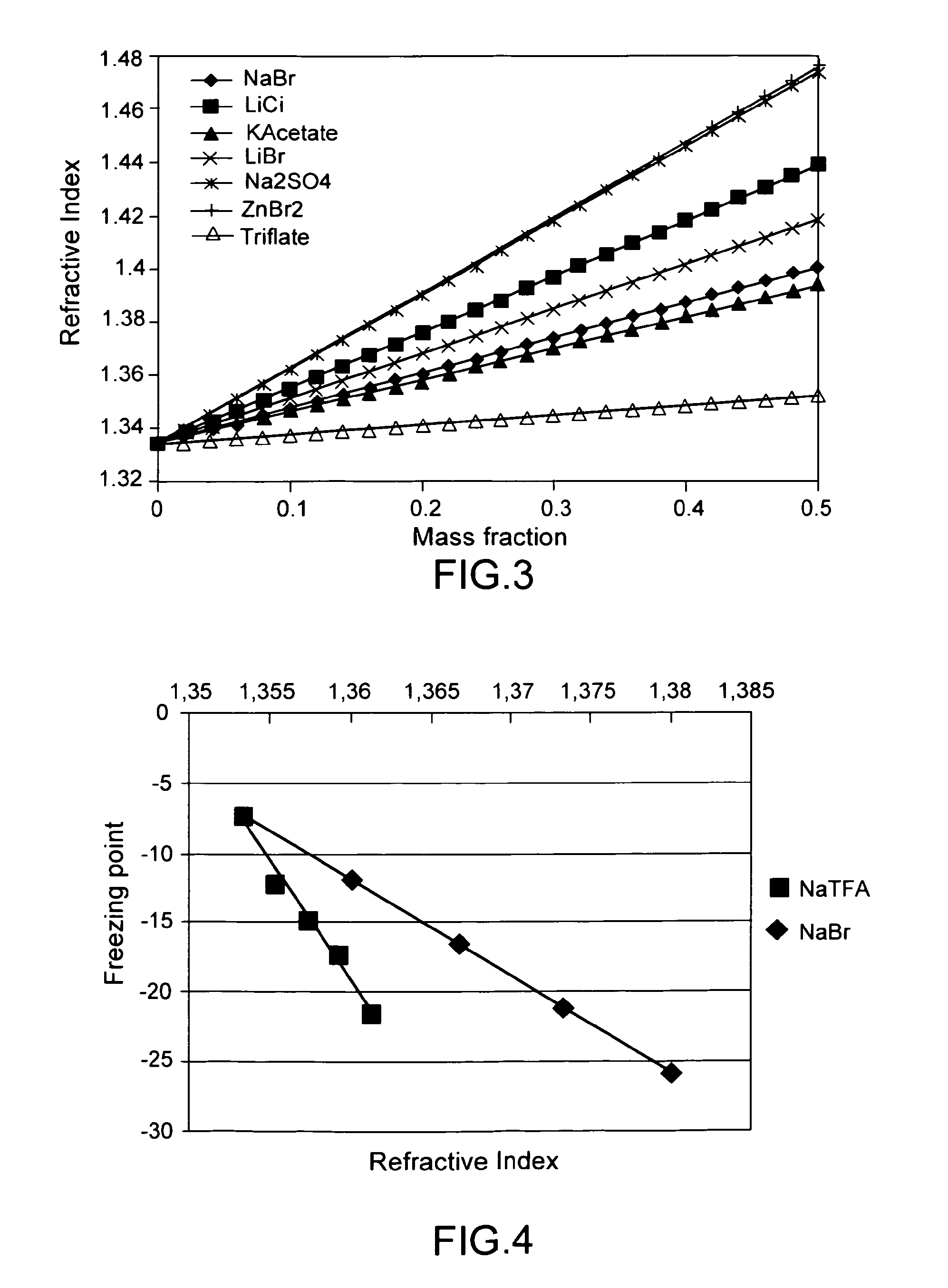Electrowetting optical device
a technology of optical devices and conductive liquids, applied in the field of electrowetting optical devices, can solve the problems of reducing the difference in refractive index, excessive increase of the refractive index and reducing the number of chemical compounds or mixtures that can be used in the liquid to achieve all the above-cited requirements, so as to avoid excessive increase of the conductive liquid density, high density, and low miscibility
- Summary
- Abstract
- Description
- Claims
- Application Information
AI Technical Summary
Benefits of technology
Problems solved by technology
Method used
Image
Examples
Embodiment Construction
[0086]FIG. 1 shows a simplified cross-section view of an example of a variable focal length liquid lens according to a preferred embodiment. A cell is defined by an insulating plate 1, side walls (not shown) and a dielectric transparent enclosure 2. The cell is filled with a conductive liquid 5. The dielectric enclosure 2 has a low wettability with respect to conductive liquid 5. In the embodiment shown, a lower wall or plate of the dielectric enclosure 2 includes a hollow 3, centered around an axis Δ perpendicular to this plate. In FIG. 1, hollow 3 is a truncated cone. A drop of non-conductive liquid 4 is placed in hollow 3. Liquid drop 4 naturally takes a position A centered on axis Δ. Non-conductive liquid 4 and conductive liquid 5 are both transparent, non-miscible, they have different optical indexes and have substantially the same density. The dioptre formed between liquids 4 and 5 forms a surface of a liquid lens, the optical axis of which is axis Δ and the other surface of w...
PUM
 Login to View More
Login to View More Abstract
Description
Claims
Application Information
 Login to View More
Login to View More - R&D
- Intellectual Property
- Life Sciences
- Materials
- Tech Scout
- Unparalleled Data Quality
- Higher Quality Content
- 60% Fewer Hallucinations
Browse by: Latest US Patents, China's latest patents, Technical Efficacy Thesaurus, Application Domain, Technology Topic, Popular Technical Reports.
© 2025 PatSnap. All rights reserved.Legal|Privacy policy|Modern Slavery Act Transparency Statement|Sitemap|About US| Contact US: help@patsnap.com



